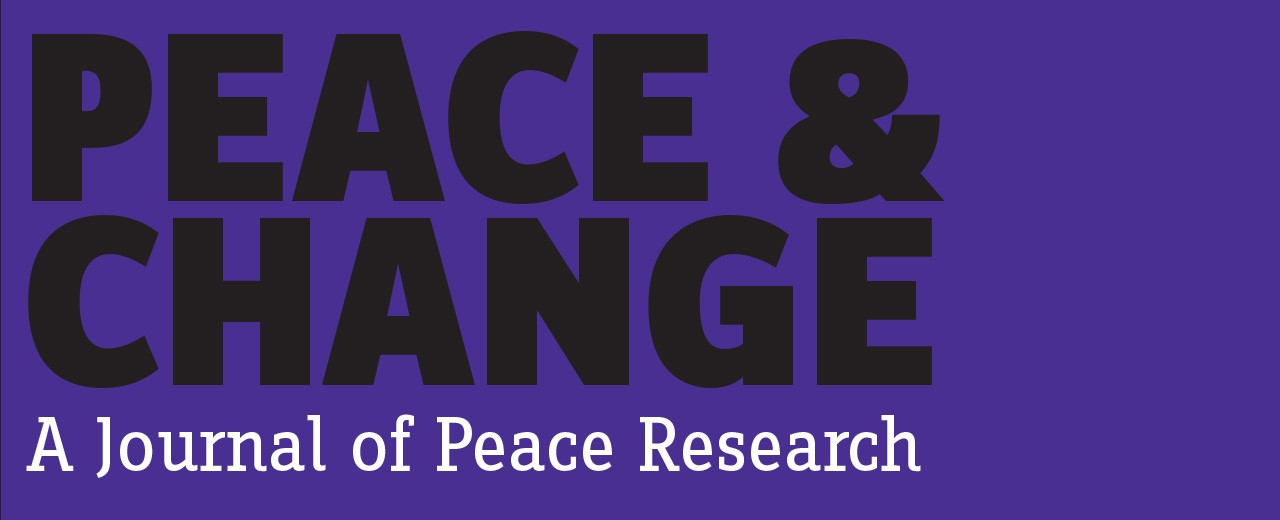Editor’s Note: One of the goals of Peace & Change Blog is to bring student voices into the conversation about the teaching and scholarship of peace history and peace studies. To that end, we are pleased to feature this post by Ed Nuñez, a sophomore majoring in Justice and Peace Studies at Creighton University, the new institutional home for Peace & Change. An aspiring liberation educator, Ed works for the Schlegel Center for Service and Justice and works with the Ignatian Solidarity Network as an activist and blogger. We at Peace & Change Blog are grateful to Ed for offering this piece on Pope Francis’s visit to the United States in September, and for his reflections on what the Pope’s recognition of Abraham Lincoln, Martin Luther King, Jr., Dorothy Day, and Thomas Merton as “exemplary Americans” means to him as a young Catholic committed to peacebuilding and social justice.
On September 24, 2015, Pope Francis made a historic speech to a joint session of the United States Congress. I remember the day very vividly. I was sitting in a big ballroom here at Creighton University while Omaha Catholic high school students were watching the speech in the auditorium one floor below. We all knew it was a historic day for us, for the United States, and for our Church. We were waiting for Pope Francis to come through that door to the Congress floor. When we all heard, “Mr. Speaker, the Pope of the Holy See!”, we all started clapping and applauding. I got the chills. To see the leader of my faith and my Church walk into the halls of a place that makes the laws and policies that make our society function was an amazing moment. Pope Francis walked up to that podium and to see all the lawmakers and politicians applaud him and stand for him made me so proud to be Catholic.
As the speech went on, Pope Francis made some incredible remarks. From speaking about abolishing capital punishment in the world to speaking about the refugee crisis to urging Congress to pass humane immigration reform, Pope Francis was amazingly vocal in what he wanted Congress to be paying attention to. He spoke with urgency, compassion, and in a spirit of dialogue.
But what stood out the most in Pope Francis’ speech was his mention of four inspiring American individuals, who “shaped fundamental values which will endure forever in the spirit of the American people”. These people were Abraham Lincoln, Dr. Martin Luther King, Jr., Dorothy Day, and Thomas Merton. Each person represented values and principles that I think are essential to the American way of life and also to those who desire to bring peace about in this world. These values are unity, equality, community, and dialogue.
Abraham Lincoln led the way toward abolishing slavery in the United States and also bringing the country together in a time of crisis. Lincoln exemplified the value of unity by stressing to the people that a Civil War would harm the country awfully. Pope Francis called him “the guardian of liberty,” and Lincoln used this liberty to help bring about unity among the American people. Unity is essential to bringing peace and change in this world because as one human family, we we need each other.
Dr. Martin Luther King, Jr. was one of the most notable and vocal civil rights activists in contemporary American history. He spoke of making American society equal and wished to have his children “not judged by the color of their skin but by the content of their character.” Dr. King wanted to bring about equality and his legacy is still living on in many movements today, from the #BlackLivesMatter movement to the movement to lower the incarceration rate among African-American people. Equality is a principle that is essential to working for peace because when people realize that they are equal because they are human, we can live in peace.
Dorothy Day was the co-founder of the Catholic Worker Movement, which is based in the belief in the inherent dignity of each human person and works to be hospitable to even the most vulnerable in society. Pope Francis said, “…her passion for justice and for the cause of the oppressed, were inspired by the Gospel, her faith, and the example of the saints.” Dorothy wanted to create and build the value of community each and every day. Community is not just a group of people living together, but is one that shares stories, learns from one another, shares in the joys and sorrows, and believes in each other. This concept is vital to making peace known in this world.
Thomas Merton was a Cistercian monk who lived and worked in Southeast Asia in the late 20th century. Thomas Merton is most known for his capacity to dialogue with people of other faiths. Dialogue is a principle that is just as difficult to attain as the others because people are so individualistic and set in their ways but we can look to Thomas Merton as an example of dialogue and how people of different faiths, cultures, genders, and backgrounds can come together and work to make everyone feel fully human – peace.
Pope Francis’ speech will be a great mark in our history for the years to come. But what do we make of it? We need to look to this speech and see the values of unity, equality, community, and dialogue in the four inspiring Americans and in ourselves to make peace known in this crazy, mixed up world we live in.
